
Growing up during the 70’s in a small Iowa town didn’t really expose me to much in the way of Chinese food. My mom made a few attempts at cooking Chinese food, mostly inspired by the “Chinese” convenience food being manufactured for home cooks. How would my mom know that Chow Mien noodles are not supposed to be crunchy, fried and come in a tin? Sweet and sour shrimp wasn’t supposed to be just sweet and the sauce should be a coating for the shrimp, not a pool to swim in. Unfortunately, the resulting dishes were so far from the traditional dishes it may have skewed Americans' taste and expectations of Chinese food forever. Most Chinese restaurants in America serve American Chinese food, rather than authentic Chinese food.
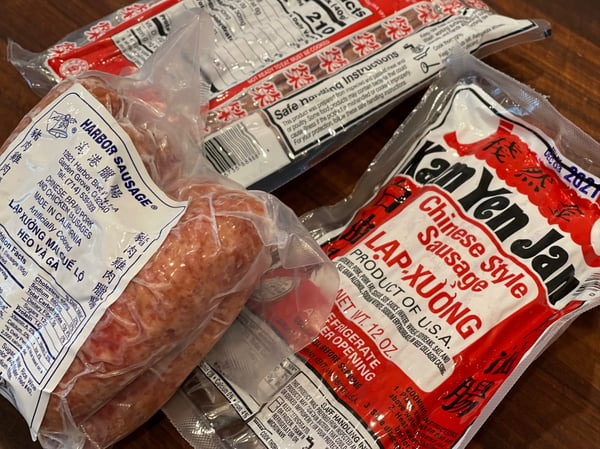 I am not an expert in Chinese cooking, and I can’t imagine I will live long enough to ever say that I am. However, I am absolutely fascinated with Chinese cuisine and am constantly trying to learn more. My friend Lillian Chou, who is an expert on Chinese cuisine lived and studied in China for ten years. She paid me a visit recently, and I talked her into giving me a Chinese cooking lesson.
I am not an expert in Chinese cooking, and I can’t imagine I will live long enough to ever say that I am. However, I am absolutely fascinated with Chinese cuisine and am constantly trying to learn more. My friend Lillian Chou, who is an expert on Chinese cuisine lived and studied in China for ten years. She paid me a visit recently, and I talked her into giving me a Chinese cooking lesson.
Beyond the cooking techniques I learned from Lillian, I have also learned that Chinese cuisine is an incredibly diverse and regional cuisine. To be a true expert in Chinese cuisine would be a lifelong pursuit. I also learned from her that you do not need to be an expert in Chinese cuisine to cook amazing Chinese food. You can start by learning one dish, and then another and another. Soon enough, you will be cooking and enjoying truly authentic Chinese food at home - Chinese food that is better than most Chinese you will find in a Chinese American restaurant.
 Lillian Chou teaching me a few tricks to authentic Chinese cuisine
Lillian Chou teaching me a few tricks to authentic Chinese cuisine
To get started, you will need to stock your pantry with a few staple Chinese ingredients. You may not have some of these ingredients on hand but many of these ingredients are now available at your local grocery store. What you can’t find at your local grocery store can be found at an Asian market or even more readily available online. None of these ingredients are expensive or highly perishable if stored properly (put your sesame oil and hoisin sauce in the fridge after you open it).
Since the closest Asian market to me is 45 minutes away, I make Asian market runs a few times a year, stocking up on shelf stable ingredients and filling my freezer with fresh noodles, gyoza wrappers and Chinese sausages. I love to buy a new ingredient or two to experiment with, so I got Black Sweet Corn on my last run. I have looked online and still can’t figure out what I am supposed to do with it, so please feel free to post suggestions in the comment section below! Here is a list of the most commonly used ingredients you need to get started.
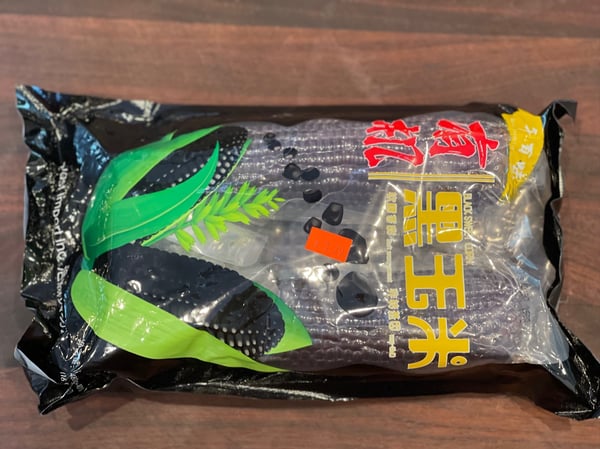
Black sweet corn
Dark soy: Believe it or not, this is a less salty version of soy sauce. It is used side by side with light soy sauce as they offer two very different flavors. Dark soy has molasses or other sweeteners so it adds a beautiful light sweetness, light saltiness, big umami flavor and a gorgeous caramel color to braised or marinated dishes.
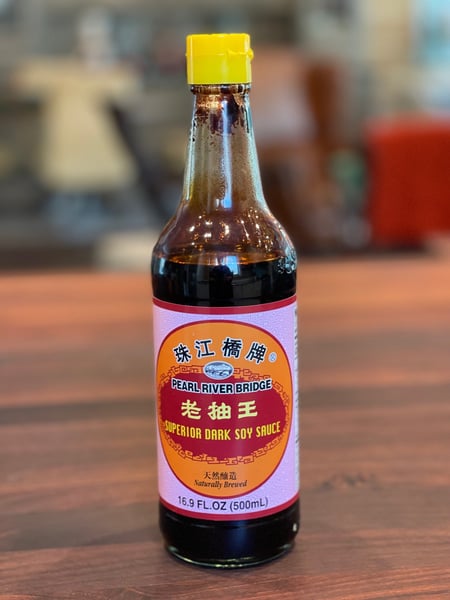 Light soy: Probably the most commonly used condiment and one not to be confused with regular soy sauce you find in the grocery store. The term “light” does not mean low sodium, in fact light soy sauce is saltier than dark soy sauce. Light soy sauce has a slight red hue, very thin viscosity and delicate flavor.
Light soy: Probably the most commonly used condiment and one not to be confused with regular soy sauce you find in the grocery store. The term “light” does not mean low sodium, in fact light soy sauce is saltier than dark soy sauce. Light soy sauce has a slight red hue, very thin viscosity and delicate flavor.
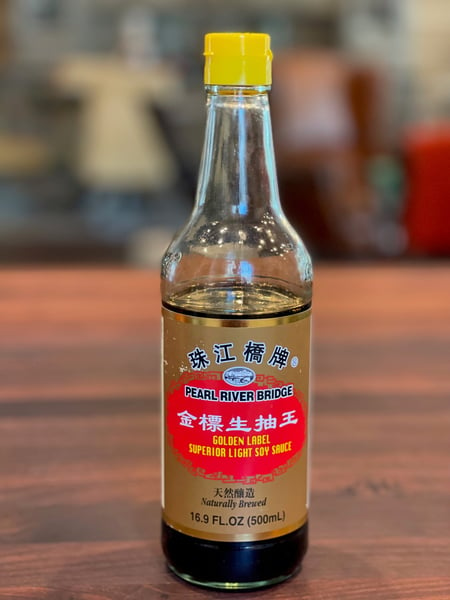 Black rice vinegar: This vinegar is made from fermented black rice and has the most exotic flavor. This condiment provides a salty, tangy and sweet taste. It is not as sour as rice wine vinegar but much softer and smoother. The dark color adds a wonderful hue to dishes.
Black rice vinegar: This vinegar is made from fermented black rice and has the most exotic flavor. This condiment provides a salty, tangy and sweet taste. It is not as sour as rice wine vinegar but much softer and smoother. The dark color adds a wonderful hue to dishes.
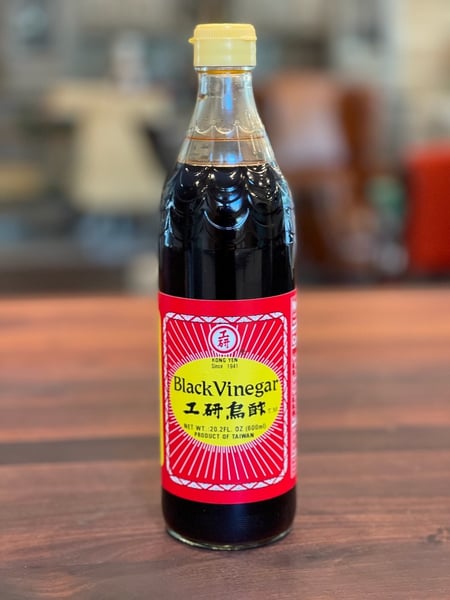 Shaoxing rice wine: Sometimes referred to as Chinese sherry, which can be used as a substitute in a pinch. It has an intoxicating flavor unique to itself, very earthy, warm and floral. It is made from fermented white and glutinous rice. It has a beautiful amber color and golden warm acidity.
Shaoxing rice wine: Sometimes referred to as Chinese sherry, which can be used as a substitute in a pinch. It has an intoxicating flavor unique to itself, very earthy, warm and floral. It is made from fermented white and glutinous rice. It has a beautiful amber color and golden warm acidity.
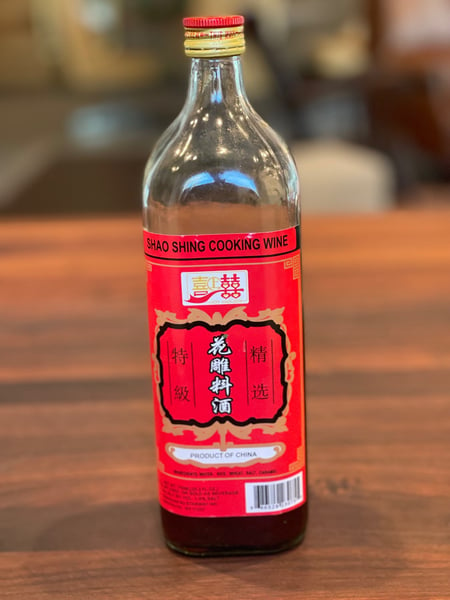 Oyster sauce: I think of oyster sauce as being to Chinese food what fish sauce is to Thai food. Yes, oyster sauce is made from oysters, which are packed with umami flavor. Fish sauce is made with fermented anchovies. Unlike fish sauce, oyster sauce also offers sweetness and viscosity since it is rather thick.
Oyster sauce: I think of oyster sauce as being to Chinese food what fish sauce is to Thai food. Yes, oyster sauce is made from oysters, which are packed with umami flavor. Fish sauce is made with fermented anchovies. Unlike fish sauce, oyster sauce also offers sweetness and viscosity since it is rather thick.
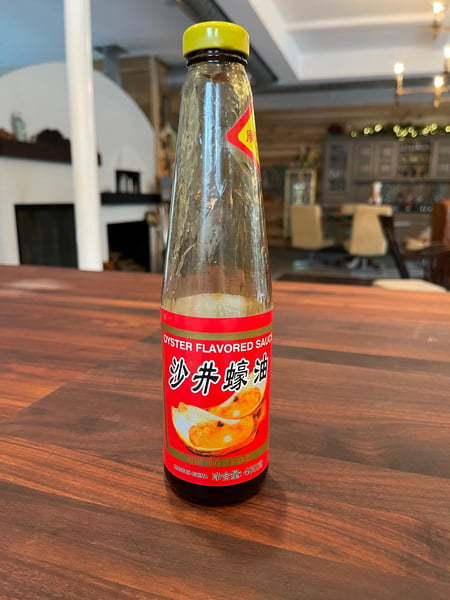 Five spice powder: You can download a recipe for five spice powder online and make your own if you have the essential ingredients - star anise being number one. Star anise is uniquely Chinese and one that I have grown to love, in fact it is one of my favorite flavors in Chinese cooking. Cinnamon, clove and fennel are standard ingredients but five spice powder may also have Sichuan or white pepper added.
Five spice powder: You can download a recipe for five spice powder online and make your own if you have the essential ingredients - star anise being number one. Star anise is uniquely Chinese and one that I have grown to love, in fact it is one of my favorite flavors in Chinese cooking. Cinnamon, clove and fennel are standard ingredients but five spice powder may also have Sichuan or white pepper added.
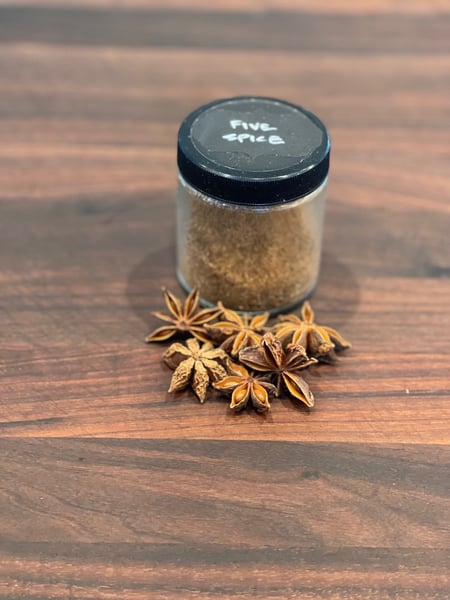 Sichuan pepper: This unique spice is a bit mysterious because it is used as much, if not more, for the sensation it creates in your mouth as for its citrusy and resinous flavor. Sichuan or Szechuan pepper is, in fact, not a pepper at all. It does not provide heat like hot peppers or black pepper but rather a numbing sensation. This spice creates a tingling sensation in your mouth which brings the flavors of what you are eating to life. Sichuan pepper is truly unique to Chinese food and there is no substitute for this spice that I am aware of.
Sichuan pepper: This unique spice is a bit mysterious because it is used as much, if not more, for the sensation it creates in your mouth as for its citrusy and resinous flavor. Sichuan or Szechuan pepper is, in fact, not a pepper at all. It does not provide heat like hot peppers or black pepper but rather a numbing sensation. This spice creates a tingling sensation in your mouth which brings the flavors of what you are eating to life. Sichuan pepper is truly unique to Chinese food and there is no substitute for this spice that I am aware of.
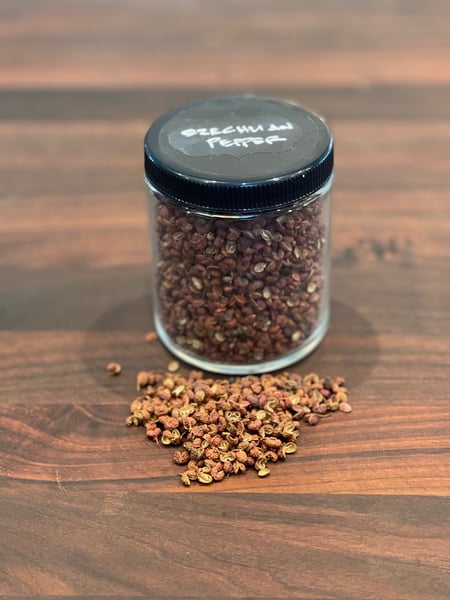 Hoisin: This fermented soy bean paste is the traditional condiment to serve with Peking Duck and Moo Shu pancakes, but it is also an ingredient in countless other dishes. This is a very thick, slightly sweet and sour condiment that is used in marinades and sauces throughout China but especially southern China.
Hoisin: This fermented soy bean paste is the traditional condiment to serve with Peking Duck and Moo Shu pancakes, but it is also an ingredient in countless other dishes. This is a very thick, slightly sweet and sour condiment that is used in marinades and sauces throughout China but especially southern China.
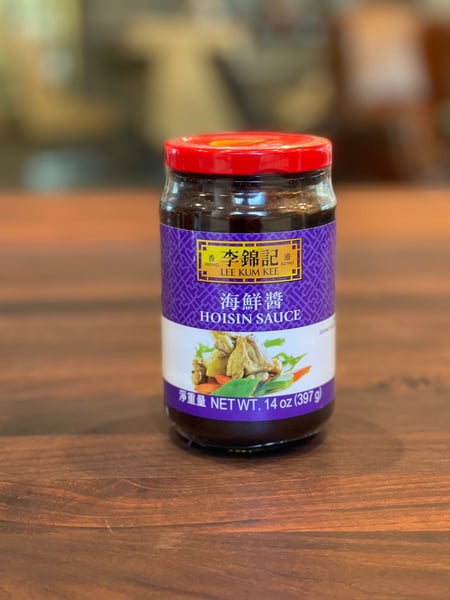 Sesame oil: You may already have this one in your refrigerator. Sesame oil is the oil of toasted sesame seeds and a staple throughout all of Asia. This oil is meant to be used as a flavoring ingredient; it isn’t meant to sauté with. The smoke point of sesame oil is very low so it does not stand up to high heat cooking.
Sesame oil: You may already have this one in your refrigerator. Sesame oil is the oil of toasted sesame seeds and a staple throughout all of Asia. This oil is meant to be used as a flavoring ingredient; it isn’t meant to sauté with. The smoke point of sesame oil is very low so it does not stand up to high heat cooking.
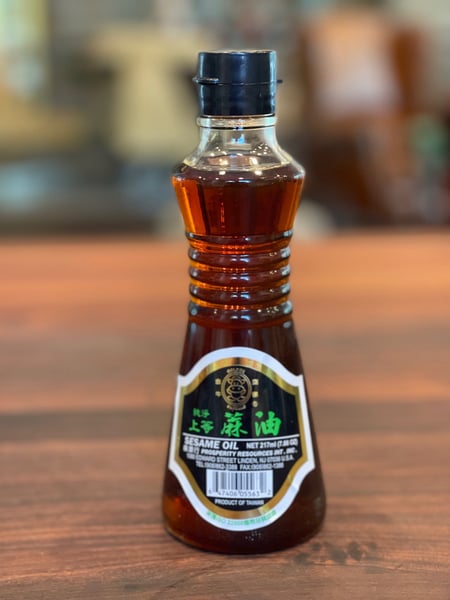 Now that you have the basic staples in your pantry, I want to offer you a classic recipe to use them in. Fried rice is a great place to start as everyone seems to love it! This version includes Chinese sausage, which I think you will love if you have never tried it, but feel free to leave it out.
Now that you have the basic staples in your pantry, I want to offer you a classic recipe to use them in. Fried rice is a great place to start as everyone seems to love it! This version includes Chinese sausage, which I think you will love if you have never tried it, but feel free to leave it out.
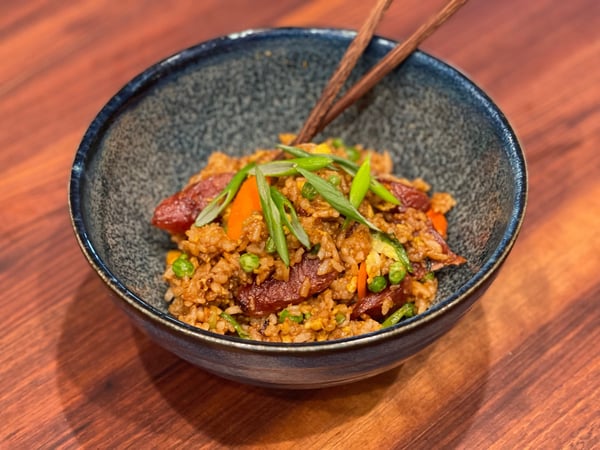
Chinese Sausage Fried Rice
Traditionally fried rice is meant to be made with leftover rice. In fact, it is a dish that is meant to use up leftovers and odds and ends of produce in the kitchen, so feel free to add or delete vegetables. Broccoli, cauliflower, cabbage, green beans, peppers can all be added to the stir fry but you can toss a handful of spinach or other greens in at the end too.
Scroll down for a printable version of this recipe
Yield: 4 servings
Prep Time: 30 minutes
Cook Time: 10 minutes
3 to 4 Tablespoons grapeseed oil
6 ounces of Chinese sausage (Lap-Xuong) cut on the bias
2 carrots, peeled and cut on the bias
6 cups cooked rice, completely chilled
4 green onions, cut on the bias
3 eggs, whisked thoroughly
1 cup of frozen peas
1 tablespoon of dark soy sauce
1 tablespoon light soy sauce
1 tablespoon oyster sauce
1 teaspoon sesame oil
Salt and pepper to taste
Step 1: Cook rice
Soak 2 cups of white rice in cold water for 15 minutes. Drain rice and place in a 3-quart sauce pan and cover with 3 1/2 cups of water. Bring rice to a boil, once it comes to a boil turn the heat down as low as possible and cover. Let cook for 15 minutes. Turn off the heat and let rest for 5 minutes. Spread rice out on a sheet pan and put in the refrigerator until completely cool. Cover once cool.
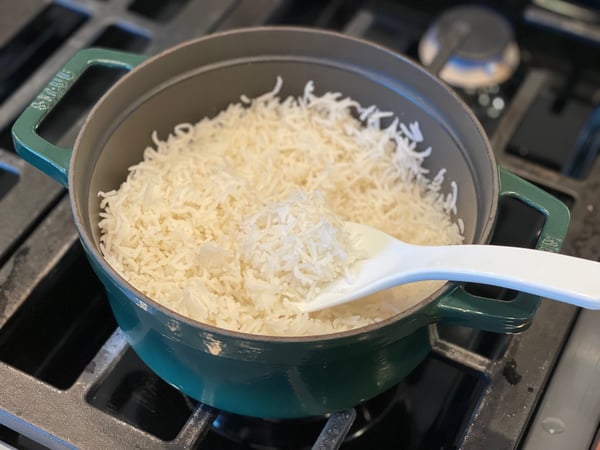 If you want more info on cooking rice, check out this post.
If you want more info on cooking rice, check out this post.
Step 2: Chop vegetables and measure ingredients (aka Mis en Place)
Pro tip: Because the actually cooking time of most Chinese food is so quick, Mis en Place is critical. All ingredients should be prepped and measured before you start cooking.
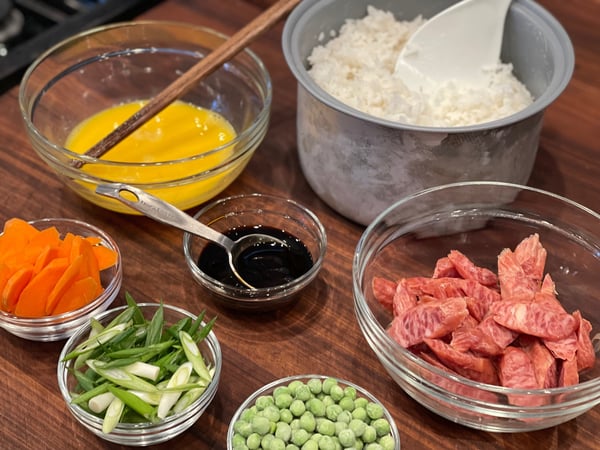 Cut the Chinese sausage, carrots and green onions on the bias. Keep each ingredient separate.
Cut the Chinese sausage, carrots and green onions on the bias. Keep each ingredient separate.
To cut on the bias, hold the food straight in front of you. Angle your knife at 45 degrees and slice.
Whisk the eggs until very thin. This keeps you from having globules of eggs in the fried rice.
Measure sauce ingredients in a small bowl, dark soy, light soy, oyster sauce and sesame oil.
Step 3: Fry rice
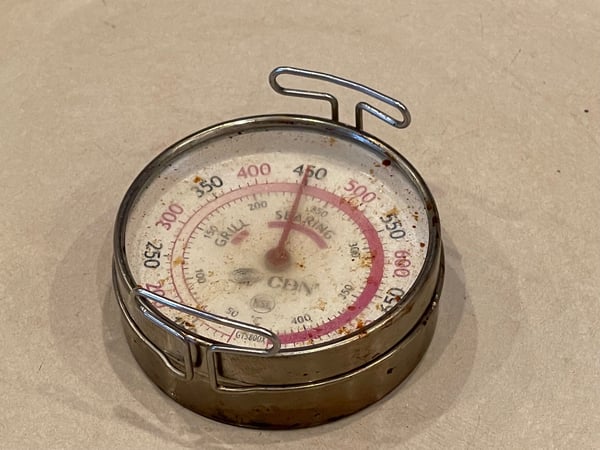 Heat a deep skillet or wok to 450 degrees (surface thermometers are very handy to determine exact heat of your pan) or medium-high heat. Add at least 2 tablespoons of grapeseed oil and have additional oil on hand to add as needed. Add sausage and sauté for 2 minutes, just until sausage starts to brown a little.
Heat a deep skillet or wok to 450 degrees (surface thermometers are very handy to determine exact heat of your pan) or medium-high heat. Add at least 2 tablespoons of grapeseed oil and have additional oil on hand to add as needed. Add sausage and sauté for 2 minutes, just until sausage starts to brown a little.
Next add carrots or any other vegetables that require longer cooking like broccoli or cauliflower. Sauté for 1 to 2 minutes.
Add cooked rice and start to break apart the rice. Don’t worry too much if the rice is stuck together, as the rice warms it will break apart and separate. Add more oil if it starts to stick to the pan, remember this is fried rice.
Push some of the rice to the side, add a little oil to that area of the pan and pour the eggs in. Stir the eggs constantly and cook them about 70% of the way. Over-cooked eggs can add a very strong sulphur taste to the dish, so it’s important not to overcook them. Mix eggs into rice.
Add frozen peas. Pour sauce around the perimeter of the pan and then stir to combine and heat the peas through.
Taste and season with salt and pepper as needed.
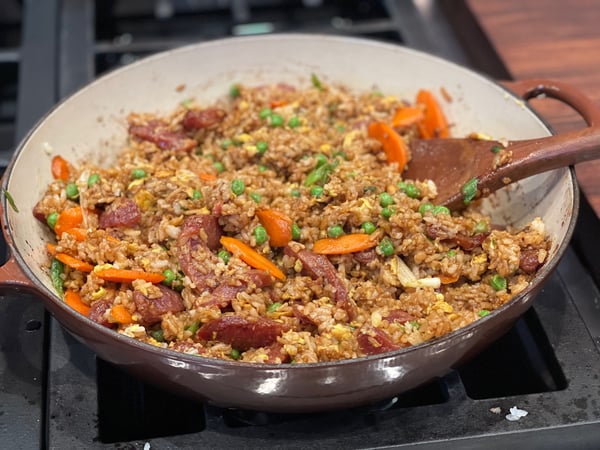 The Chopping Block is coming up on our 25th anniversary. I can tell you that over the course of the 25 years we have been in business, the classes our students are interested in taking remain relatively constant. The most popular classes when we opened are still the most popular classes today: Knife Skills, Italian, French, Pasta and Flavor Dynamics.
The Chopping Block is coming up on our 25th anniversary. I can tell you that over the course of the 25 years we have been in business, the classes our students are interested in taking remain relatively constant. The most popular classes when we opened are still the most popular classes today: Knife Skills, Italian, French, Pasta and Flavor Dynamics.
But there are new classes that are now considered staples: Ramen, Sushi and Steakhouse DIY. What I would like to add to this list is Chinese Cooking! Most people can whip up a plate of pasta on their own but executing the perfect fried rice or chicken chow mien is a mystery to most. Join us in our upcoming virtual Chinese New Year class and let’s get you started on your road to cooking Chinese! This class is being held on Friday, January 28 at 6:15pm CST. Join us and make:
- Shrimp and Ginger Wonton Soup
- Kung Pao Chicken with Steamed Rice
- Szechuan Green Beans
We also have a virtual Asian Dumplings Workshop coming up this Sunday, January 30 at 3pm CST. Learn how to be creative with store-bought gyoza and wonton wrappers to create an assortment of dumpling favorites from appetizer to main course. You'll make:
- Pork Pot Stickers
- Crab Rangoon
- Shrimp Wonton Dumplings in Soup
Members of our private Facebook group are challenged to make a dish for Chinese New Year this week. Join in on the fun and share your creations with other home cooks!
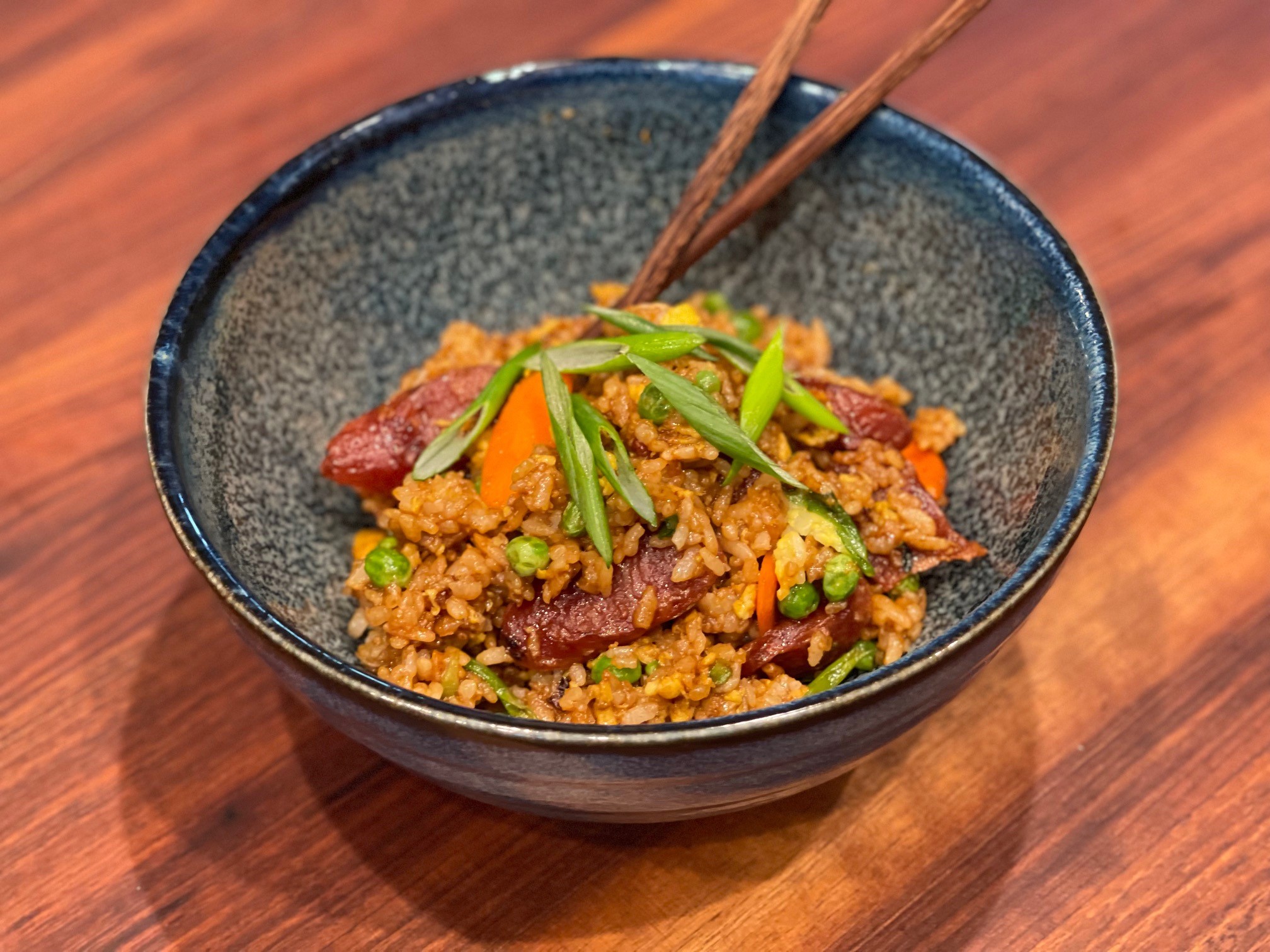
Chinese Sausage Fried Rice
Ingredients
- 3 to 4 Tablespoons grapeseed oil
- 6 ounces of Chinese sausage (Lap-Xuong) cut on the bias
- 2 carrots, peeled and cut on the bias
- 6 cups cooked rice, completely chilled
- 4 green onions, cut on the bias
- 3 eggs, whisked thoroughly
- 1 cup of frozen peas
- 1 tablespoon of dark soy sauce
- 1 tablespoon light soy sauce
- 1 tablespoon oyster sauce
- 1 teaspoon sesame oil
- Salt and pepper to taste
Instructions
- Soak 2 cups of white rice in cold water for 15 minutes. Drain rice and place in a 3-quart sauce pan and cover with 3 1/2 cups of water. Bring rice to a boil, once it comes to a boil turn the heat down as low as possible and cover. Let cook for 15 minutes. Turn off the heat and let rest for 5 minutes. Spread rice out on a sheet pan and put in the refrigerator until completely cool. Cover once cool.
- Cut the Chinese sausage, carrots and green onions on the bias. Keep each ingredient separate.
- Whisk the eggs until very thin.
- Measure sauce ingredients in a small bowl, dark soy, light soy, oyster sauce and sesame oil.
- Heat a deep skillet or wok to 450 degrees or medium-high heat. Add at least 2 tablespoons of grapeseed oil and have additional oil on hand to add as needed. Add sausage and sauté for 2 minutes, just until sausage starts to brown a little.
- Add carrots or any other vegetables that require longer cooking like broccoli or cauliflower. Sauté for 1 to 2 minutes.
- Add cooked rice and start to break apart the rice. Don’t worry too much if the rice is stuck together, as the rice warms it will break apart and separate. Add more oil if it starts to stick to the pan, remember this is fried rice.
- Push some of the rice to the side, add a little oil to that area of the pan and pour the eggs in. Stir the eggs constantly and cook them about 70% of the way. Over-cooked eggs can add a very strong sulphur taste to the dish, so it’s important not to overcook them. Mix eggs into rice.
- Add frozen peas. Pour sauce around the perimeter of the pan and then stir to combine and heat the peas through.
- Taste and season with salt and pepper as needed.




